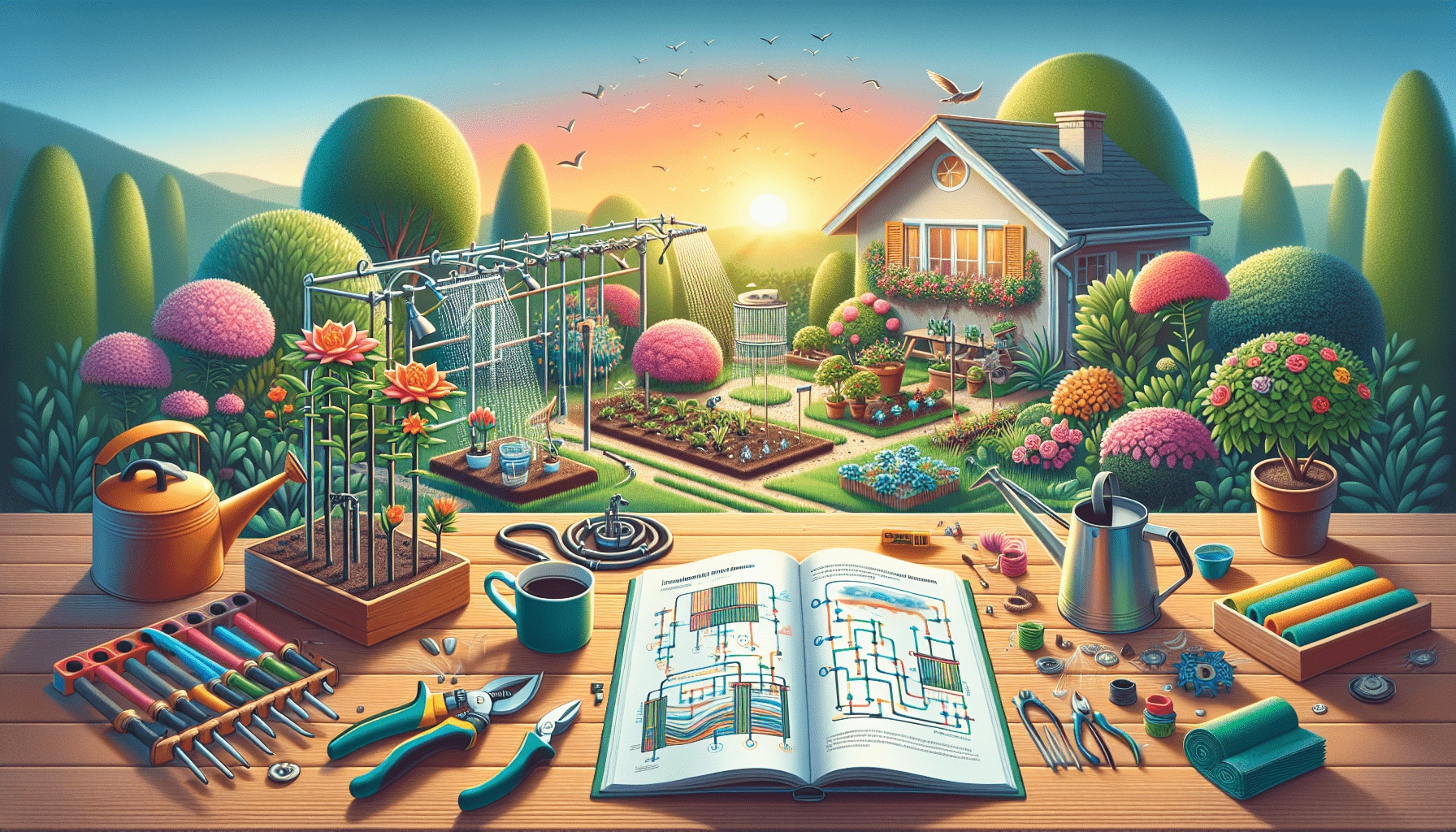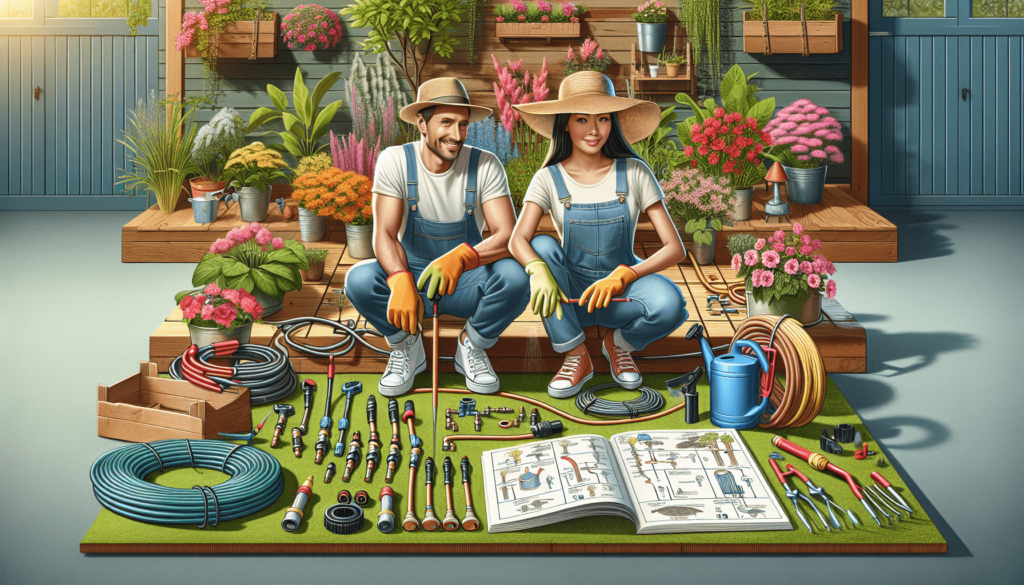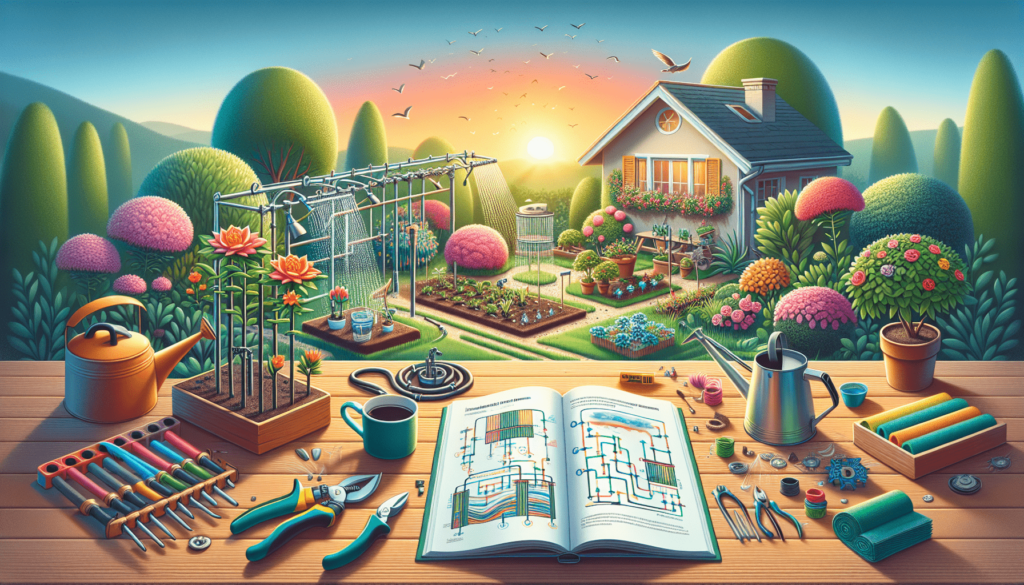
Welcome to “DIY Gardening: Can I Install My Own Irrigation System?” In this engaging and informative read, you’ll journey into the world of do-it-yourself gardening projects, specifically focusing on the feasibility and process of installing your very own irrigation system. From evaluating the right system for your garden to the step-by-step installation procedure, this article covers everything you need to know. Dive into the exciting venture of not only beautifying your garden but also making it as self-sufficient as possible with your very own installed irrigation system.
Can you really install your own garden irrigation system?
Ever been stumped wondering if you could install your own irrigation system? Considering the savings, it might be tempting. But the real question is – how difficult really is it? Can an average, non-gardener pull it off? And more importantly, where should you really start?
Well, if this question has been bothering you, then know you’re at the right place. Together, let’s talk about how you can effectively install your own irrigation system for your DIY gardening initiative.

The Basics of An Irrigation System
Before getting our hands dirty, let’s first get to understand what an irrigation system actually implies. At its simplest, an irrigation system is a mechanism by which water gets distributed evenly across your garden or lawn. It could encompass a range of solutions such as sprinkler systems, drip irrigation, soaker hoses, manual watering, and so on. You must choose the right type of irrigation system basis the type and needs of your garden.
Understanding What Your Garden Needs
Having cleared the air on what an irrigation system is, let’s explore the next big question. What kind of irrigation system does your garden need? To answer this, it’s crucial you have a clear understanding of your garden’s topology. Consider factors such as the area of your garden, type of plants you have, the nature of your soil, and the local weather conditions. For instance, flower beds might be more suited for drip irrigation while lawns typically prefer sprinkler systems.

The Different Types of Irrigation Systems
Sprinkler System
A sprinkler system is best suited for large, open areas like lawns. The system mimics artificial rainfall and provides a uniform water coverage for your grass. It’s simple, relatively easy to install and you can adjust the range of their spray to suit your garden’s needs.
Drip Irrigation
Drip irrigation is all about delivering water directly to the roots of your plants. It’s a cost-effective option which minimises water wastage and is perfect for plant beds, vegetable patches, or hilly terrains.
Soaker Hoses
Consider a soaker hose for your garden if the area is small to moderate. It’s a hose with tiny holes that lets water ooze slowly directly into the soil. They’re particularly effective for rows of plants and don’t require much setup.
DIY Irrigation System Installation Guide
Now that you’ve decided which type of irrigation system suits your garden’s needs, let’s delve into the installation process.
Materials Required
Regardless of the system you’re installing, there are a few materials that you’ll likely need. Include Teflon tape, pipe cutters, a shovel, PVC glue, and connectors in your checklist. Also add to the list the specific materials related to the type of irrigation you chose.
Layout and Design
First, sketch out your garden on paper including locations of plants, trees and other features. Measure the area accurately.
Installing a Sprinkler System
For a sprinkler system, here’s a step by step guide:
-
Determine sprinkler placement: You should place your sprinklers such that their arcs of water overlap, ensuring even water distribution.
-
Dig trenches: For the water lines, dig trenches that are about 8 to 10 inches deep.
-
Assemble the system: Attach the risers and sprinkler heads to the pipes. Fix the pipes into the trenches.
-
Connect to water source: Once the system is assembled, connect it to your water supply valve.
-
Test the system: Finally, turn on the system and check for any leaks or misaligned sprinklers.
Installing a Drip Irrigation System
For a drip irrigation system, follow these steps:
-
Lay out your tubing: Start by laying out your tubing alongside the plants you wish to water.
-
Connect emitters: Place emitters next to each plant you want to water and connect them to the main tubing.
-
Install a backflow preventer: This will prevent dirt from being sucked back into the tubing.
-
Connect to water source: Connect the main line to your water source.
-
Test your system: Turn the water on and check for leaks or blocked emitters.
Installing Soaker Hoses
For a soaker hose system:
-
Position the soaker hose: Place your soaker hose alongside the plants you want to water.
-
Connect to water source: Just connect one end to your water tap, it’s as simple as that!
-
Test the system: Switch on the water supply. If water oozes out evenly, you’re all set!
Facing Issues? Troubleshoot!
In case you encounter any issues during installation, don’t panic. Troubleshooting is a normal part of DIY projects. Check for leaks, clogs or any misaligned sprinklers and adjust as necessary. Remember to test-run your system again whenever you make changes to ensure all is good.
Wrapping It Up
Hopefully, you now feel more confident in tackling the big question – “Can I install my own irrigation system?” Just remember that understanding your garden’s specific needs and designing your system around those needs is key. So roll up your sleeves, bring out that DIY spirit and enjoy the process. Happy gardening!
